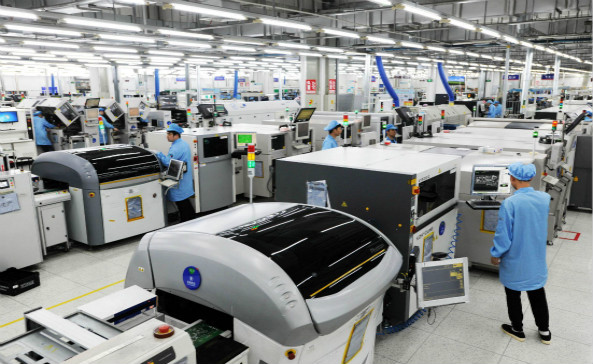Can a 3D Printer Print Circuit Boards?
Table of Contents
- Introduction
- Current State of 3D Printed PCBs
- Key Technologies Enabling 3D Printed Electronics
- Benefits vs. Limitations
- Practical Use Cases
- Spotlight: Wintech’s Role in PCB Production
- Future Outlook
- Conclusion
- Summary Table
Introduction

Can a 3D printer print circuit boards (PCBs)? The answer is: yes — but only under specific conditions. Recent advances in conductive inks, additive manufacturing, and specialized printers have made it possible to produce functional PCBs. However, traditional subtractive methods remain the gold standard for high‑precision, mass‑production applications. Let’s dive into how 3D‑printed electronics work, their benefits, drawbacks, and where they fit in today’s electronics manufacturing landscape.
Current State of 3D Printed PCBs
Desktop and industrial-grade printers can now deposit conductive traces and insulation materials to create printed circuit boards layer by layer. Companies such as Nano Dimension with its DragonFly IV and Voltera’s V‑One and Nova series are leading this space .
- Nano Dimension DragonFly IV: Uses AgCite (silver nanoparticle) and dielectric inks to print high-resolution, multi-layer PCBs with 75 µm conductive layers and 18 µm dielectric separation .
- Voltera V‑One / Nova: Desktop systems that print conductive ink onto substrates, drill holes, and reflow components — ideal for quick-cycle prototyping.
Key Technologies Enabling 3D Printed Electronics
- Conductive Inks & Filaments: Materials like silver nanoparticle ink, carbon-black filament (e.g., “carbomorph”) enable trace printing through extrusion or inkjet methods .
- Multi-Material Printers: Machines that deposit both conductors and dielectric substrates, such as FDM with dual nozzles or inkjet-based systems .
- Software & Design Support: Advanced ECAD/MCAD integration in tools like Altium Designer is helping designers prepare 3D PCB layouts.
Benefits vs. Limitations
Benefits
- Rapid Prototyping: From CAD to working PCB in hours — no need for etch setup .
- Custom Shapes & Integration: Embed circuitry directly into 3D-printed enclosures and curved surfaces .
- Lower Waste: Additive processes reduce material usage compared to subtractive etching .
- On-Demand Production: Ideal for one-offs, prototypes, or low-volume specialty boards.
Limitations
- Conductivity & Performance: Printed traces have higher resistance and lower current capacity than copper .
- Resolution Constraints: Typical trace widths: FDM ≥ 0.5 mm, SLA/DLP ~0.1 mm, inkjet ~0.05 mm .
- Durability & Stability: Conductive inks may oxidize; printed traces often need post‑processing .
- Slow Throughput: Layer-by-layer printing still lags behind traditional fabrication speeds.
- Equipment Cost & Complexity: Specialty machines and inks are expensive; still niche .
Practical Use Cases
- Rapid Prototyping: Students, makers, and SMEs can iterate hardware swiftly .
- Wearables & Flexible Electronics: Embedded, curved, or stretchable PCBs for innovative form-factors .
- Custom IoT Devices & Sensors: Small batch custom boards integrated into unique housing .
- Educational Tools: Hands-on circuits built directly in classrooms and maker spaces .
Spotlight: Wintech in PCB Manufacturing

While 3D-printed PCB technology grows, traditional PCB manufacturing remains critical for professional electronics. Wintech offers full turnkey services—from PCB design and layout to manufacturing, SMT assembly, prototypes, and mass production. Their one-stop solutions ensure quality, precision, and scalability that 3D-printed processes can’t yet match.
- PCB Design & Layout
- PCB Manufacturing & Assembly (SMT)
- Prototyping & Quick-Turn Production
- Support for Complex, High-Precision PCBs
Future Outlook
- Better Materials: Graphene, copper-based inks, and improved conductivity paths .
- Higher Resolution Printing: Precision-liquid inkjet and hybrid 3D/2D systems evolve toward thin, reliable traces .
- Integrated ECAD/MCAD: Unified design software improves workflows .
- Hybrid Manufacturing: Combining 3D-printed enclosures with traditional copper PCBs for optimal performance.
Conclusion
In summary, 3D printing circuit boards is technically possible and increasingly practical for prototyping, custom form-factor electronics, and educational use. Still, traditional PCB fabrication through companies like Wintech remains the standard for precision, reliability, and mass production needs. As additive materials and printers mature, expect 3D‑printed PCBs to become increasingly capable—but for now, they complement rather than replace conventional manufacturing.
Summary Table
| Aspect | 3D-Printed PCBs | Traditional PCBs |
|---|---|---|
| Prototyping Speed | Hours on-site | Days to weeks with fab houses |
| Trace Quality | 0.05–0.5 mm; higher resistance | High precision, low resistance copper |
| Cost | High per unit, DIY feasible | Cost-efficient at volume |
| Applications | Wearables, custom forms, education | Consumer, automotive, industrial, high-frequency electronics |
| Scalability | Low to mid-volume | High-volume, multi-layer, complex assemblies |






